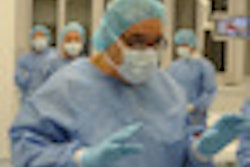Swiss researchers have concluded that education and training can lead to substantial reductions in CT radiation dose, according to a study published online 31 May in European Radiology.
Lead study author Dr. Sebastian T. Schindera from the University Hospital Bern in Switzerland and colleagues reviewed programs at 10 radiological institutes, which included a small group workshop and a lecture on radiation dose reduction strategies.
The radiation dose used for five CT protocols (paranasal sinuses, brain, chest, pulmonary angiography, and abdomen) was assessed using a dose-length product (DLP) protocol before the education and training program. Mean DLP values then were compared to national diagnostic reference levels (DRLs).
The average reduction of the DLP after optimization was 37% for the sinuses, 9% for the brain, 24% for the chest, and 42% for the pulmonary arteries.
The study also found no significant change in DLP for abdominal CT. Post-optimization DLP values of the sinuses was 68% less than DRLs, 10% less for the brain, 20% less for the chest, 55% lower for the pulmonary arteries, and 15% less for the abdomen.



















